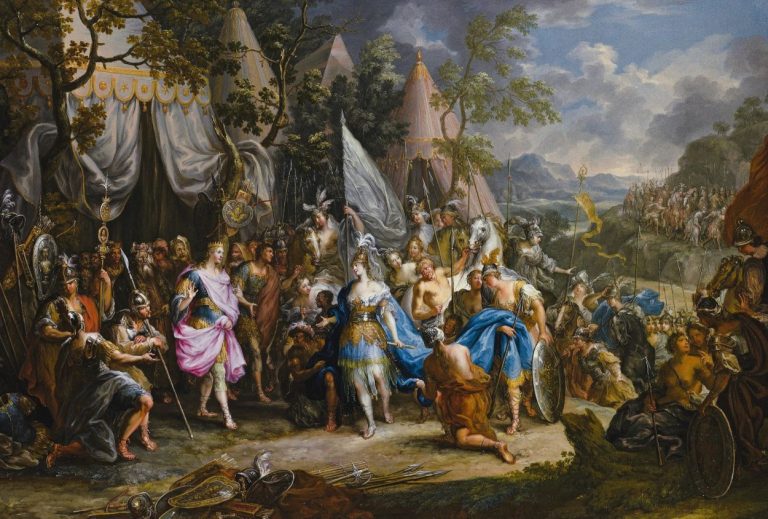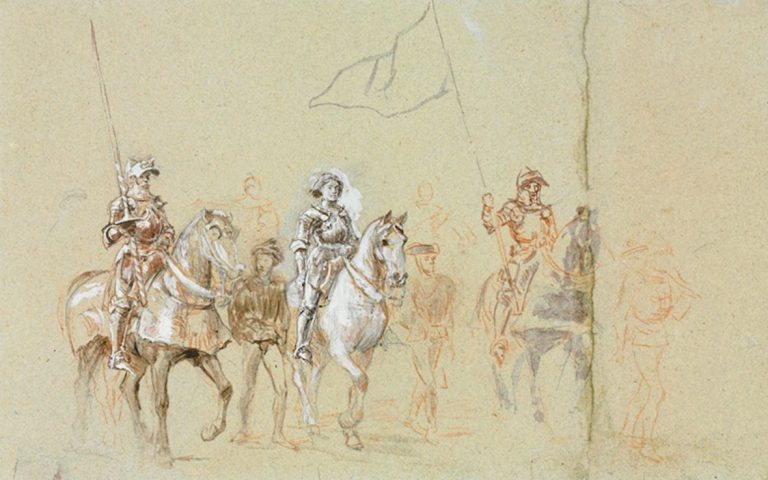
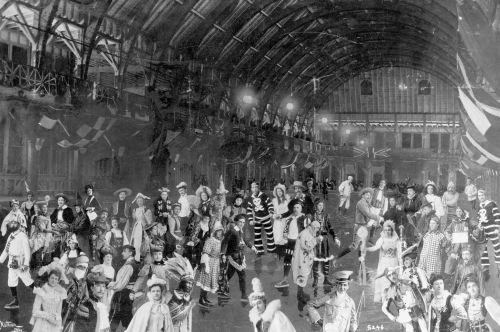
The roots of image manipulation can be traced back to the earliest days of photography in the 19th century.

By Matthew A. McIntosh
Public Historian
Brewminate
Introduction
The manipulation of images has been a fundamental practice for centuries, but it is only in the modern era that it has evolved into a sophisticated and pervasive technique, influencing everything from advertising to journalism, politics, and entertainment. The history of modern image manipulation traces a trajectory that spans from the early days of photographic manipulation in the 19th century to the digital age where software like Photoshop and artificial intelligence have revolutionized the way we alter and manipulate images. This essay explores the evolution of image manipulation, examining key technological advancements, cultural implications, and the ethical challenges posed by these developments.
Early Image Manipulation: Photography and Photomontage
Overview
The roots of image manipulation can be traced back to the earliest days of photography in the 19th century. Though photography was initially seen as a truthful medium that captured reality, it was not long before photographers began altering their images to reflect artistic intentions, ideological beliefs, or commercial objectives.
The Birth of Photographic Manipulation
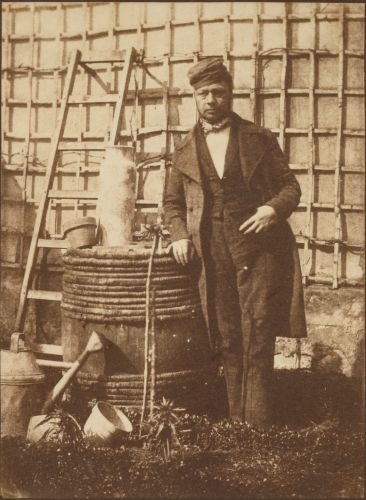
In the mid-1800s, as photography became widely accessible, the manipulation of images was already taking place. Early photographers used techniques such as hand-coloring photographs, composite imagery, and even double exposures to create visual illusions. One famous example from this period is the work of Hippolyte Bayard, who in 1840 created a photographic self-portrait in which he depicted himself as a drowned man. Bayard’s image was a form of social commentary on his own photographic achievements and his unsuccessful attempts to have his invention of photography recognized. This early use of altered imagery signaled the potential for photographs to communicate beyond mere documentation.
The Rise of Photomontage
In the early 20th century, the artistic movement of Dadaism and later Surrealism provided a new platform for image manipulation through techniques like photomontage, where artists cut and reassembled photographs to create new, often provocative compositions. Hannah Höch, a German artist, is particularly known for her pioneering photomontages, which critiqued societal norms and political conditions of the time. Photomontage techniques soon gained popularity in political and artistic circles, offering a way to manipulate images to challenge established truths or create subversive political messages.
The Emergence of Digital Image Manipulation
The Advent of Digital Photography
The advent of digital photography in the late 20th century marked a significant turning point in the history of image manipulation. In the 1990s, the transition from film to digital photography allowed for the development of software tools that would transform how images were altered. The creation of Adobe Photoshop in 1987 was a pivotal moment. Initially a basic image editing tool for graphic designers, Photoshop rapidly grew into the industry standard for digital image manipulation. It was the first software that allowed for sophisticated alterations to digital images, including color correction, cropping, and the addition of special effects.
Digital Tools and Techniques
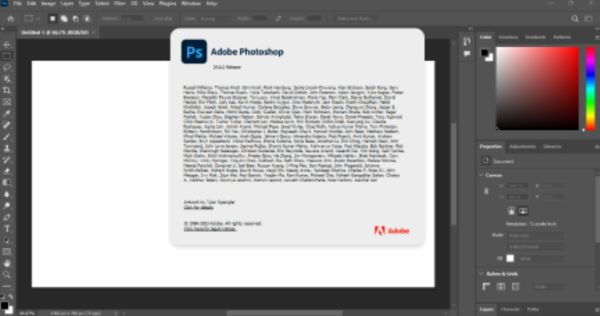
With the rise of Photoshop and other similar programs, the tools available to image manipulators became more advanced and accessible. Techniques like layering, masking, and the clone stamp tool enabled photographers, graphic designers, and artists to alter images in ways that were once unimaginable. As the software evolved, the ability to manipulate not only the composition and aesthetics of an image but also its content became increasingly seamless. Content-aware fill, for example, allowed users to remove unwanted objects from images without leaving traces, making digital manipulation more realistic than ever before.
The accessibility of these tools democratized image manipulation, enabling not only professionals but also amateurs to create convincing altered images. By the late 1990s and early 2000s, websites like Flickr and Instagram facilitated a new form of image-sharing, with millions of users participating in the manipulation and sharing of photos. The rapid spread of digital technologies and software tools in the 21st century led to an explosion of user-generated content, making image manipulation a daily activity for millions of people.
The Role of Image Manipulation in Media and Culture
The Influence on Advertising
The influence of image manipulation on advertising cannot be overstated. From the early days of digital photography, advertisers began to use image manipulation to create more alluring, aspirational representations of products. Perfectly manicured photos of models, flawless skin, and meticulously designed landscapes have become a staple of modern advertising. Image manipulation has allowed marketers to craft idealized visions of products and lifestyles, shaping consumer desires and expectations in profound ways.
The beauty industry, in particular, has been significantly impacted by the manipulation of images. Retouching tools have been used to remove imperfections, smooth skin, and adjust proportions to create an unattainable ideal of beauty. This practice has led to a growing backlash, with movements like body positivity calling attention to the harmful effects of manipulated images on self-esteem and body image, particularly among young people.
Political and Journalistic Manipulation
Beyond advertising, image manipulation has had profound implications for politics and journalism. Political campaigns, particularly in the digital age, have relied heavily on manipulated images to shape public perception. One of the most infamous instances of political image manipulation was during the Soviet Union era, where photographs of Stalin and other leaders were doctored to remove rivals and enemies. These “disappearing acts” were intended to erase opponents from the historical narrative and project a unified political front.
In modern politics, manipulated images and videos have become a tool for both political campaigns and political subversion. The rise of deepfakes, for instance, has raised concerns about the potential for digitally altered videos to mislead the public, create fake news, and undermine trust in democratic processes. These technologies, which use artificial intelligence to generate hyper-realistic images and videos, have the power to distort reality in unprecedented ways.
Social Media and the Culture of Manipulation
The proliferation of social media has been a key driver of the increasing normalization of image manipulation in contemporary culture. Platforms like Instagram, TikTok, and Snapchat allow users to apply filters, alter facial features, and adjust the aesthetics of their photos and videos in real-time. These platforms have contributed to the creation of an entire aesthetic culture that thrives on curated, manipulated images.
The desire for “likes” and social validation has led many users, particularly influencers and celebrities, to adopt highly edited photos as the norm. While some might argue that this is harmless self-expression, critics point out the harmful effects this culture has on mental health, especially among younger users. Studies have shown that exposure to heavily manipulated images can lead to unrealistic expectations of beauty and self-worth.
The Ethical Implications of Image Manipulation
Overview
The widespread use of image manipulation raises significant ethical questions. While digital manipulation has provided new creative possibilities, it has also prompted concerns about truthfulness and authenticity in visual media.
The “Fake News” Era
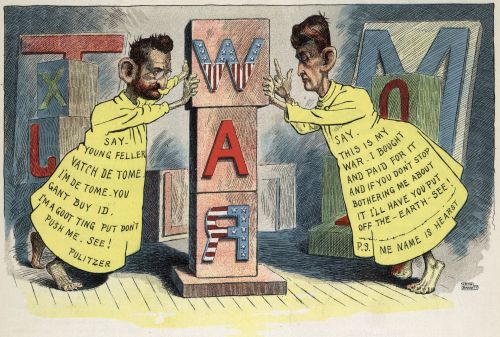
As manipulated images and videos become more difficult to distinguish from reality, questions about the integrity of information in the public sphere have become central to debates about media and technology. The phenomenon of fake news has made it clear that the manipulation of images and videos can have profound consequences on public trust and democratic institutions. The manipulation of visual content for political gain, financial profit, or personal advantage undermines the credibility of information and makes it harder for audiences to discern what is true.
The Impact on Personal Identity and Representation
On a more personal level, the manipulation of images raises issues about self-representation and identity. The digital age has made it easier for individuals to craft idealized versions of themselves, leading to a rise in curated self-representations. While this can be empowering for some, it also creates pressure to conform to unrealistic standards of beauty and success. For marginalized groups, image manipulation has the potential to either empower or distort their representation, depending on how it is used.
The Future of Image Manipulation
Looking forward, the future of image manipulation is likely to be shaped by the continued development of artificial intelligence and machine learning. Generative Adversarial Networks (GANs), for example, have the potential to create photorealistic images, videos, and even entire virtual environments that are indistinguishable from reality. While this opens up exciting creative possibilities, it also presents challenges for ethical governance and the regulation of manipulated content.
Moreover, the increasing integration of augmented reality (AR) and virtual reality (VR) into everyday life will likely lead to new forms of image manipulation, where users can interact with and alter their environments in real-time.
Conclusion
The history of modern image manipulation reflects the evolution of technology, culture, and society. From early photographic techniques to digital manipulation and artificial intelligence, the tools and techniques of image manipulation have reshaped the way we perceive and engage with the world. While the ability to manipulate images has democratized creativity and expression, it has also introduced significant ethical challenges that require careful consideration. As technology continues to advance, the line between reality and illusion will only become more blurred, and it will be up to society to navigate the complexities of image manipulation in the digital age.
Originally published by Brewminate, 05.15.2025, under the terms of a Creative Commons Attribution-NonCommercial-NoDerivatives 4.0 International license.
